#Convair XF2Y Sea Dart
Explore tagged Tumblr posts
Text

A Convair XF2Y-1 Sea Dart (BuNo 137634) on an unknown ship in Panama canal. This Sea Dart was transported to the Maryland Aviation Historical Society and later became part of the Smithsonian Institution collection and is in storage at the Paul Garber Restoration Facility in Suitland, Maryland, awaiting restoration.
Note: "Hold For National Air Museum" painted on the side.
Date: August 1958
source
#Convair XF2Y-1 Sea Dart#XF2Y#Convair XF2Y Sea Dart#Convair XF2Y#Convair F2Y Sea Dart#Convair F2Y#F2Y Sea Dart#F2Y#United States Navy#U.S. Navy#US Navy#USN#Navy#Panama Canal#August#1958#my post
41 notes
·
View notes
Text
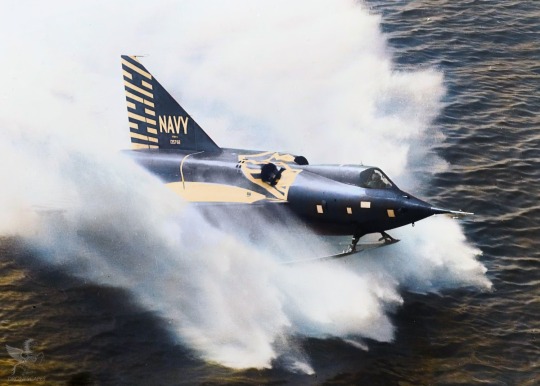
Convair XF2Y Sea Dart, 1954
➤➤ AVIATION ODDITIES: https://youtu.be/wjc_kH147u0
#convair#Sea Dart#Prototype#Supersonic#History#Engineering#Miles Libellula#Convair Sea Dart#youtube#aircraft#airplane#aviation#dronescapes#military#documentary#aviation history
69 notes
·
View notes
Text
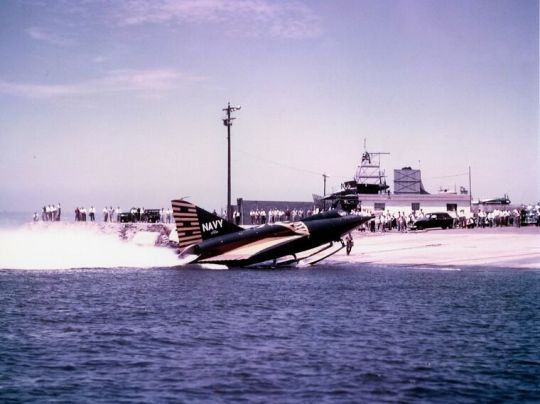
- Convair XF2Y-1 Sea Dart (BuNo 137634) landing on shore. | Photo: US Navy
FLIGHTLINE: 128 - CONVAIR F2Y-1 SEA DART
Designed after WWII, the Sea Dart was the US Navy's first and only supersonic seaplane fighter, though it never saw production.
In the wake of WWII, the US Navy sought a supersonic interceptor aircraft, but doubts about operating jet aircraft, especially supersonic jets, from carriers led to the request for a seaplane interceptor. Convair's design team under Ernest Stout proposed a plane based on the F-102 Delta Dagger, modified with retractable skis.

-Orthograph of the Sea Dart. | Illustration: Convair
In order to reduce the chances of water ingestion, the intakes were moved behind the cockpit, high on the fuselage. The aircraft would sit level in the water, with the wingtips providing floatation for some measure of stability. At 10mph, the skis would extend to an intermediate position, pushing the fuselage out of the water. Between forty-five and fifty-five mph the skis would be fully extended; take off speed would be 145mph. Production aircraft were expected to be fitted with a pair of Westinghouse J46 turbojets, though the prototypes were equipped with J34s instead, as the former were not available. The prototypes were unarmed, but operational F2Ys were to be fitted with four Colt Mk12 20mm cannon and an unspecified number of folding fin aerial rockets; a similar weapons loadout was carried by the F-89 Scorpion and F-94 Starfire.

-Line drawing of the XF2Y-1 prototype with its single ski. | Illustration: blueprints.com
During construction of the XF2Y-1, the contract was altered, eliminating the second prototype and adding 4 service test aircraft (YF2Y) and eight production F2Y models. The prototype was also fitted with a single larger ski compared to the test types. In December 1952 the XF2Y was transported from Convair's San Diego factory to San Diego Bay for testing. On 14 January 1953 it achieved a short flight during taxi testing, with the first official flight occurring on 9 April.

-The XF2Y with a trailer and access ladder. | Photo: US Navy
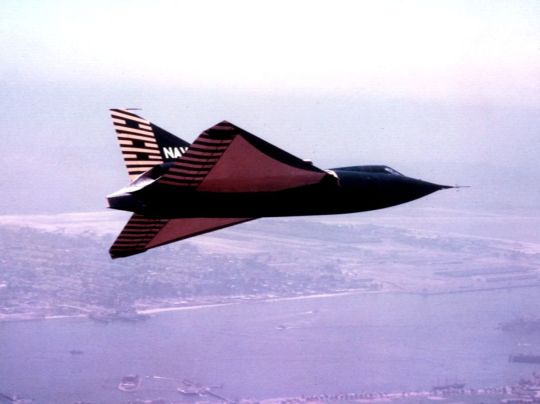
-The XF2Y in flight over San Diego. The yellow markings against the dark blue provided a reference of the aircraft's attitude for engineers. | Photo: US Navy
Flight testing on the XF2Y showed that the plane was (as expected) underpowered with the J34 engines, and was unable to exceed Mach 1. The design, based on the pre-area rulled F-102 fuselage, generated excessive drag, which only exacerbated the issue. In addition, the hydroskis proved to be less effective than hoped, and even with the shock-absorbing oleo legs the aircraft experienced jarring vibrations during takeoffs and landings. Engineers attempted to correct the flaws by refining the ski design, switching to two skis, removing the beaching wheels, and changing the oleo legs, but the vibration issue was never fully solved.
With the cancellation of the second XF2Y, the first two YF2Y test types were fitted with J46s engines and began their test program in 1954. Unfortunately, the J46 proved to also be underpowered, and the Sea Dart was still unable to exceed Mach 1 in level flight. That said, the aircraft did go supersonic on several flights by executing a shallow dive, making it the sole seaplane to break the sound barrier. Tragedy struck on 4 November 1954, when Convair test pilot Charles Richbourg was killed during a demonstration flight. YF2Y-1 BuNo 135762 broke apart in mid-air when the aircraft's structural limitations were exceeded. This accident, combined with lingering issues with the hydroski design and advancing technology allowing supersonic jets to fly from carriers saw the Sea Dart project relegated to experimental status, with the eight production aircraft cancelled and the last two test aircraft completed without engines.
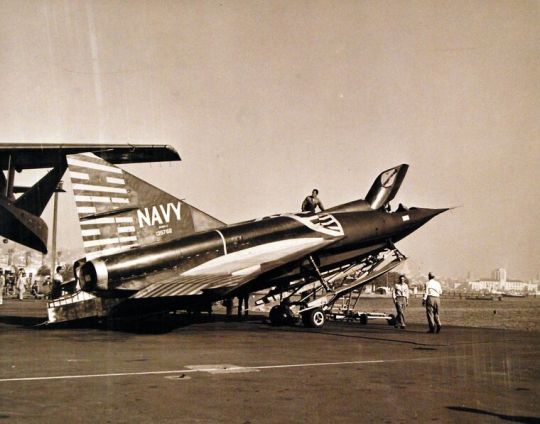
-One of the last photos of Convair pilot Charles Richbourg and the F2Y prior to their ill-fated flight. Photo: US Navy
Flights of the remaining Sea Darts continued, at a reduced tempo, until 1957 after which the aircraft were placed into storage. For this reason, the aircraft were still technically "on the books" in 1962 and were thus redesignated the YF-7A under the Tri-Service scheme, even though they had not flown for some 5 years. One XF2Y prototype and three YF2Y test aircraft survive, on display across the US:
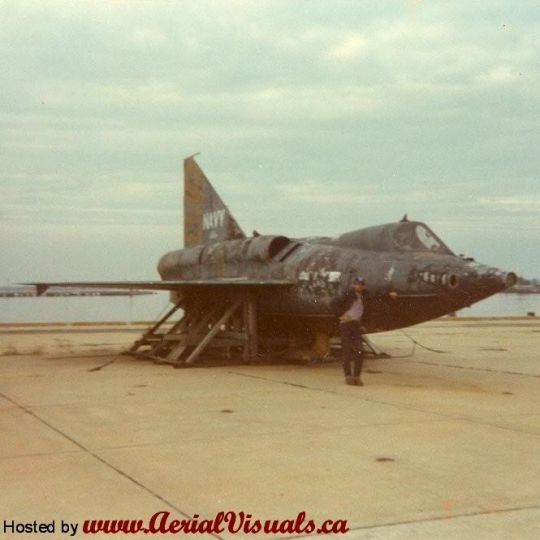
-XF2Y-1 Sea Dart, Bureau Number 137634, is in bad shape due to a mistake with a crane and is awaiting restoration for the Smithsonian Institution in Washington D.C..

-YF2Y-1 Sea Dart, Bureau Number 135763, is on display at the San Diego Air & Space Museum in Balboa Park.

-YF2Y-1 Sea Dart, Bureau Number 135764, is on display at the Wings of Freedom Aviation Museum at NAS Willow Grove, Pennsylvania.

-YF2Y-1 Sea Dart, Bureau Number 135765, is on display at the Florida Air Museum
#aircraft#aviation#avgeek#cold war#airplanes#airplane#cold war history#coldwar#aviation history#navy#us navy#f2y#Convair f2y#Convair sea dart#sea dart#f2y sea dart#xf2y#yf2y#yf7a#yf 7a#Convair#seaplane#sea plane
69 notes
·
View notes
Text
Ronnie Bell Following
Convair XF2Y-1 Sea Dart after taking off.
Via Flickr
5 notes
·
View notes
Photo

1954 Convair XF2Y Sea Dart taking off.
4 notes
·
View notes
Video
XF2Y-1 Sea Dart BuNo 137634 by G. Verver Via Flickr: Convair XF2Y-1 Sea Dart BuNo 137634 (jet seaplane) taxiing circa 1954. Official U.S. Navy photo.
35 notes
·
View notes
Text
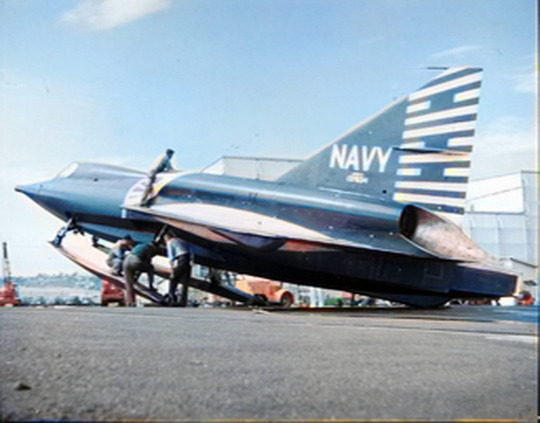
Convair XF2Y Sea Dart parked at Lindbergh Field in Convair's San Diego, California facility.
SDASM: 01_00083857
#Convair XF2Y-1 Sea Dart#XF2Y#Convair XF2Y Sea Dart#Convair XF2Y#Convair F2Y Sea Dart#Convair F2Y#F2Y Sea Dart#F2Y#United States Navy#U.S. Navy#US Navy#USN#Navy#San Diego#California#1950s#my post#Lindbergh Field
31 notes
·
View notes
Text

Convair XF2Y-1 Sea Dart sitting on a ramp at Convair's San Diego, California facility at Lindbergh Field.
source
#Convair XF2Y-1 Sea Dart#XF2Y#Convair XF2Y Sea Dart#Convair XF2Y#Convair F2Y Sea Dart#Convair F2Y#F2Y Sea Dart#F2Y#San Diego#California#1950s#my post
32 notes
·
View notes
Text

Convair XF2Y-1 Sea Dart (BuNo 137634) landing on shore.
Date: between 1953 and 1957
U.S. Navy National Museum of Naval Aviation photo No. 1996.253.7213.012
#Convair XF2Y-1 Sea Dart#XF2Y#Convair XF2Y Sea Dart#Convair XF2Y#Convair F2Y Sea Dart#Convair F2Y#F2Y Sea Dart#F2Y#United States Navy#U.S. Navy#US Navy#USN#Navy#San Diego#California#1950s#my post
37 notes
·
View notes
Text


Drawings of carrier based version of the Convair F2Y Sea Dart.
source
#Convair XF2Y-1 Sea Dart#XF2Y#Convair XF2Y Sea Dart#Convair XF2Y#Convair F2Y Sea Dart#Convair F2Y#F2Y Sea Dart#F2Y#United States Navy#U.S. Navy#US Navy#USN#Navy#cancelled#my post
24 notes
·
View notes
Text
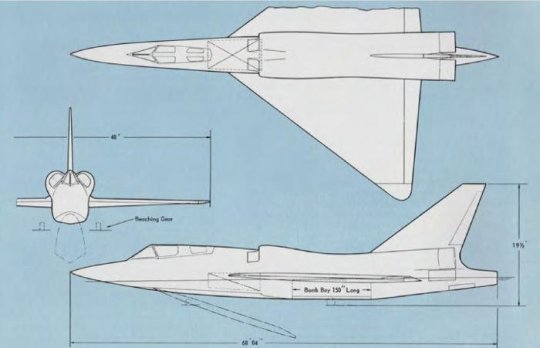
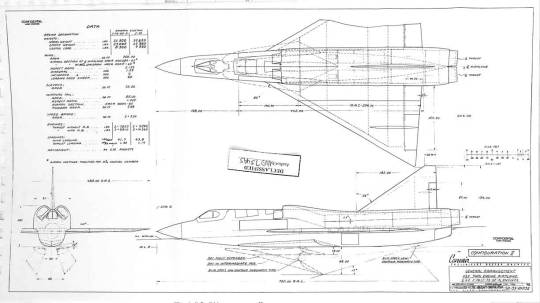
Convair F2Y-2
This version "had been envisaged as the definitive production version of the SeaDart. It had a single waterski, an area-ruled fuselage, plus a single afterburning Pratt and Whitney J-75 turbojet of 15,000 pounds of thrust."
source, source, source
#Convair XF2Y-2 Sea Dart#XF2Y#Convair XF2Y Sea Dart#Convair XF2Y#Convair F2Y Sea Dart#Convair F2Y#F2Y Sea Dart#F2Y#United States Navy#U.S. Navy#US Navy#USN#Navy#my post
20 notes
·
View notes
Text
Demonstration flight of Consolidated XF2Y Sea Dart (BuNo 135762) over San Diego Bay for naval officials and the press, on November 4, 1954. The aircraft disintegrated in midair over the bay, killing Convair test pilot Charles E. Richbourg when he inadvertently exceeded the airframe's limitations.
NARA: 76191
#Consolidated F2Y Sea Dart#F2Y#F-7#seaplane#fighter#November#1954#San Diego#California#west coast#United States Navy#US Navy#Navy#USN#video#my post
53 notes
·
View notes
Text

-A YP6B-1 on beaching gear . | Photo: US Navy/Martin Photograph
FLIGHTLINE: 125 - MARTIN P6M SEAMASTER
The P6M SeaMaster was one of a group of seaplanes proposed in the early 1950s to allow the US Navy to have a strategic nuclear bombing role.
In April of 1951, the US Navy proposed creating a “Seaplane Striking Force” that could participate in both nuclear and conventional warfare, as well as reconnaissance and mine-laying. Being seaplanes, this force would be mobile, and would have essentially unlimited and indestructible runways, and would (coincidentally) allow the Navy to claw back some prestige from the USAF’s SAC, which monopolized the US nuclear strategic role with its fleets of B-29, B-36, B-47, B-50 and B-52 bombers after WWII.
Convair, a merger of Consolidated and Vultee) supplied two fighter concepts to the SFF, the XFY-1 Pogo VTOL and the XF2Y-1 Sea Dart seaplane, as well as the XP5Y patrol bomber flying boat, which was later reworked into the R3Y-1 Tradewind cargo/troop carrier. All four planes suffered from either airframe or engine issues (or both) however, and none were successful.

-Composite photo of Convair's SSF aircraft . | Graphic: Justin Gibb
The Glenn L Martin Company, meanwhile, submitted a swept wing, jet-powered flying boat which shared the all-flying T tail of its XB-51 bomber, as well as the rotating bomb bay which was practically a Martin signature. Power was to be provided by the P&W J58 (yeah, same as the OXCART/YF-12/SR-71), though the (much) less powerful Allison J71-A-4 engines were used on the initial XP6M-1 prototypes.

-The first XP6M-1 being rolled out . | Photo: Martin/USN photo
The first flight of the XP6M-1 was on 14 July 1955, and test flights showed promise, however they also showed that the engines were placed too close to the fuselage, and that engaging the afterburners would scorch the plane. The first SeaMaster was destroyed on 7 December 1955 (seriously, not a good date for the USN), when the controls malfunctioned and the horizontal tail went full up. The airplane broke apart at 5,000 feet after being subjected to a 9 g outside loop, crashing into the Potomac River and killing the crew of four.

-An XP6M-1 in flight, circa 1955 . | Photo: Martin/US Navy
The second XP6M-1 first flew on 18 May 1956, but crashed on 9 November after an elevator jack failed at 21,000 feet, putting the plane into a nose up climb similar to the accident that claimed the first SeaMaster. The crew were unable to bring the nose back down, and ejected.

-A YP6M-1 taking off . | Photo: Martin/US Navy
The modified YP6M-1 first flew in January 1958, followed by five more. At this point, testing was moved to Harvey Point, and the aircraft were fitted with test versions of the full combat suite, and were used for bombing, mine laying and recon evals. This test phase revealed severe issues with the -1, including reliability issues with the J71 engines, spray ingestion at higher weights, and a tendency to porpoise at certain trim settings. At this point, the P6M-1 program was cut, and Martin and the Navy began work on an improved version.
The P6M-2 would be an operational aircraft, and featured a switch to P&W J75 engines, an aerial refueling probe as well as a buddy refueling system, improved avionics and a redesigned canopy for better visibility. The first was rolled out early in 1959, and three were built by that summer. The -2 aircraft were quick, capable of Mach 0.9 on the deck, and ruggedly built, with skin thicknesses of over 1 inch at the roots. The change in engines however had induced serious control and maneuverability issues, with the new airplanes experiencing compressibility above Mach 0.8, resulting in rapid changes in directional trim, severe buffeting, and wing drop which required high control inputs to counter. Martin was sure it could iron out these issues, but in August the Navy informed Martin that the P6M was canceled, and that all development work was to cease. The program was behind schedule and over budget, and by this point the Navy was no longer interested in the SFF; with the USS George Washington, armed with the first SLBMs, set to enter service in December of that year, the time for the SeaMaster had run out.

-A P6M-2 loaded on to the beaching trolley . | Photo: Martin/US Navy

-Final production model SeaMaster, showing "buddy" refueling drogue . | Photo: Martin/US Navy

-The Sea Masters outside the Martin factory. | Photo: Martin/US Navy
Martin attempted to interest airlines in the P6M, offering an enlarged passenger version called the Model 307 ‘SeaMistress’, but there were no takers, and the remaining P6Ms were scrapped.

-Models of the Model 307 Sea Mistress and P6M Sea Master . | Photo: Glenn L Martin Aircraft

-Artist’s impression of the Model 307 . | Illustration: Glenn L Martin Aircraft
The SeaMaster was Martin’s last airplane, which abandoned aircraft for missiles and electronics. Martin merged with American Marietta Corp in 1961, forming Martin Marietta, which built missiles and rockets, including the AGM-12 Bullpup, the Titan family of ICBMs and space launch vehicles, the Atlas launch vehicles (acquired from General Dynamics) and the Viking, Magellan, and Mars Polar Lander space probes. Martin Marietta also produced paints, dyes, metallurgical products, construction materials, and other goods, as well as the Monorail (there should be a link to the Simpsons' Monorail song here, but the Hyphen doesn't handle YT links right to do that...) for Walt Disney World. The company was acquired by Lockheed in 1995, though it later spun off Martin Marietta Materials as a separate company.
#aircraft#aviation#avgeek#cold war#airplanes#airplane#cold war history#coldwar#aviation history#us navy#patrol aircraft#convair#convair p6b#p6b#p6b sea master#p6b seamaster#seamaster
88 notes
·
View notes
Video
XF2Y-1 Sea Dart BuNo 135762 by G. Verver Via Flickr: Convair XF2Y-1 Sea Dart BuNo 135762 (jet seaplane) landing circa 1954. Official U.S. Navy photo.
16 notes
·
View notes
Video
Convair XF2Y-1 disintegrates over San Diego Bay 1954 by Robert Sullivan Via Flickr: The U.S. Navy Convair XF2Y-1 Sea Dart (BuNo 135762) disintegrates in mid-air over San Diego Bay on 4 November 1954, California (USA), during a demonstration for Navy officials and the press, killing Convair test pilot Charles E. Richbourg when he inadvertently exceeded the airframe limitations.
3 notes
·
View notes

